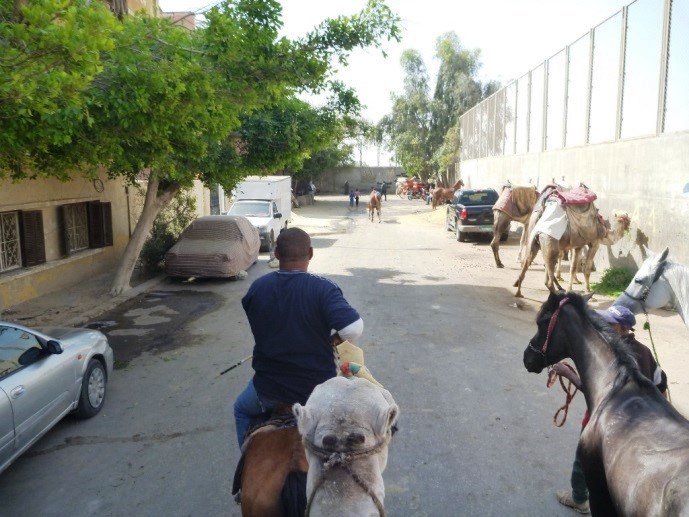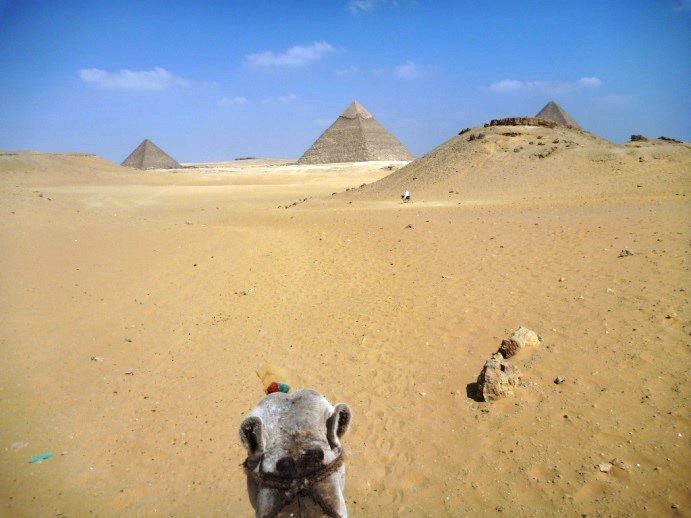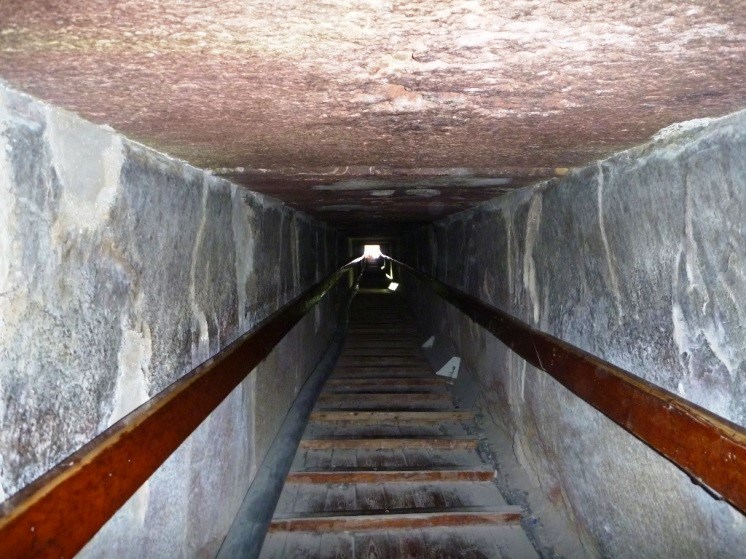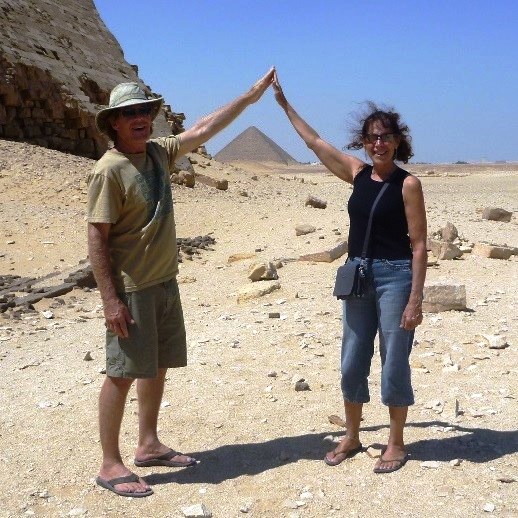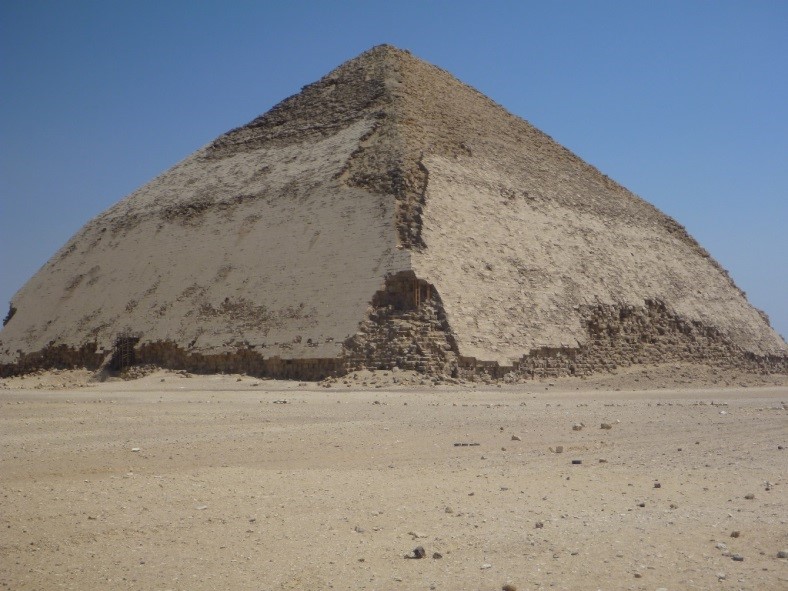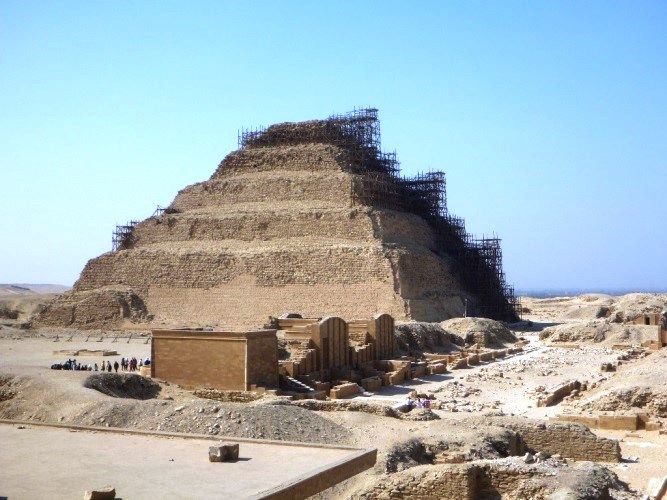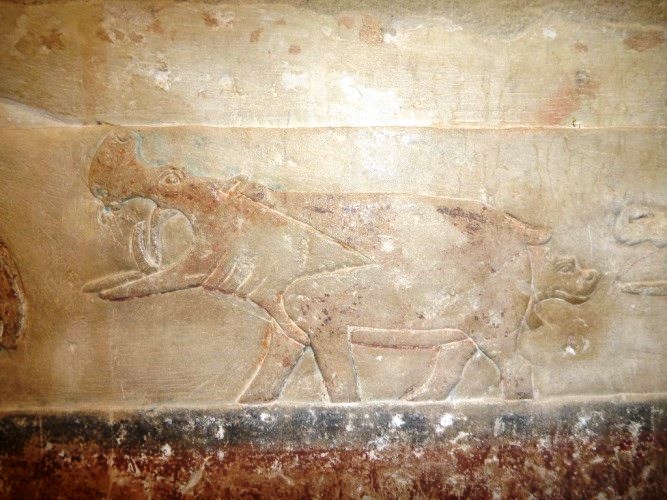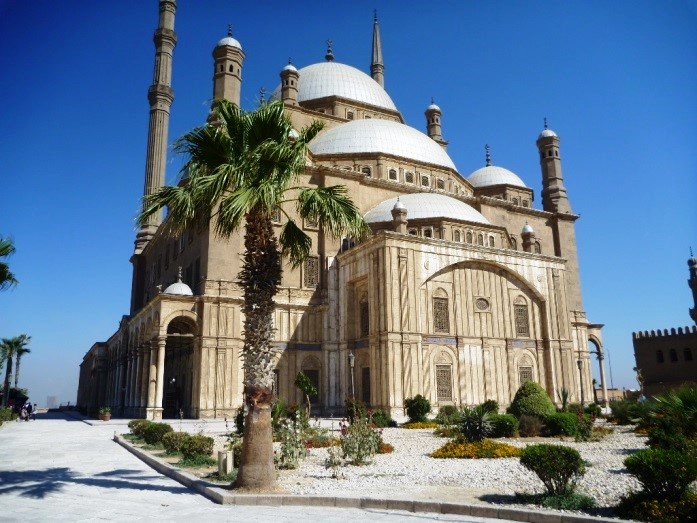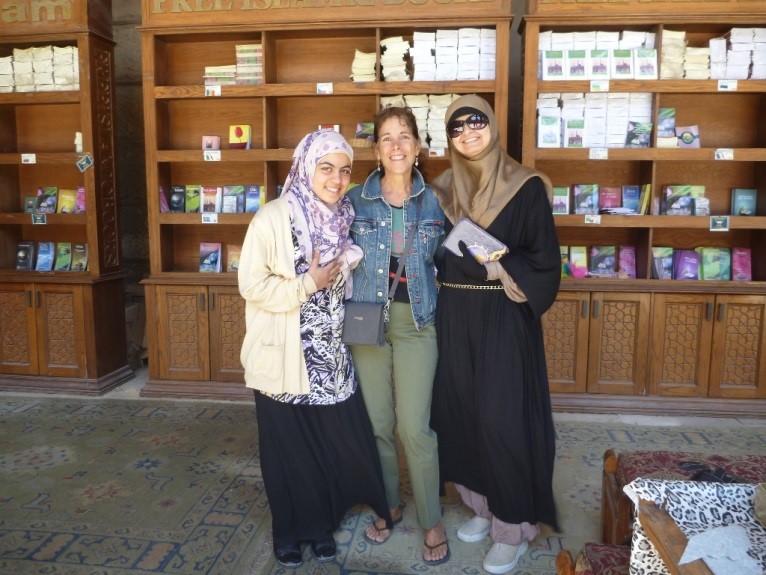Cairo Egypt 2015: Pyramids
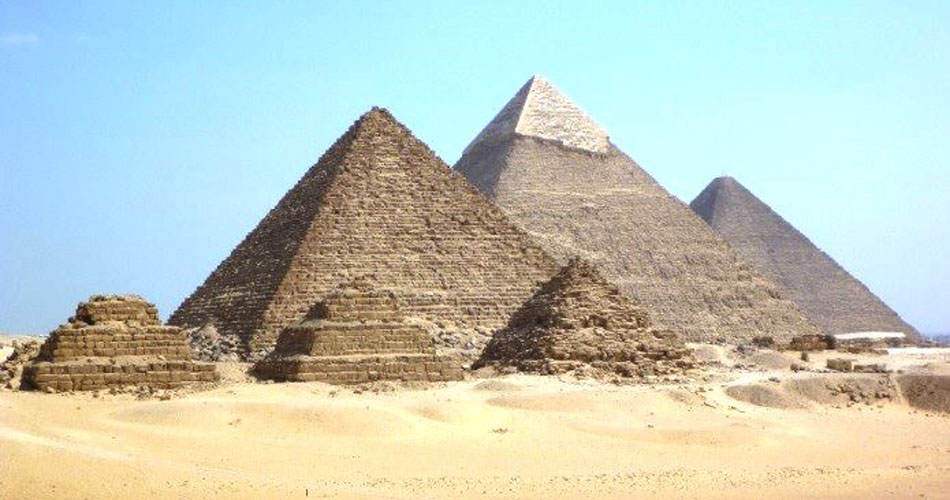
Cairo and the Pyramids at Giza, Dashur, and Sakkara
23 Apr – Cairo – day 1
Instead of hiring a car for $100 each way to drive us from Suez to Cairo, we opted for the local bus which cost 38 pounds (about $5). It was an adventure, but we didn’t have any problems. Once in Cairo we caught a taxi to our hotel. We arrived early in the afternoon and walked around the neighborhoods. We walked to a square, the central site of the 2011 revolution, then crossed over a bridge on the Nile to view the city. It’s a huge city, in fact the second largest city in the world after Mexico City. There’s lots of sand and dust and haze and some pollution, making it hard on the allergies. The hawkers are another story… Completely relentless and skilled, each with their own spiel and hard sell to get you into their shop. Still, it was great to be in Cairo (wow!!! We’re in Cairo, Egypt!) and we enjoyed the walking.
24 Apr – Pyramids! Cairo – Day 2
We hired a car and driver, deciding to forego the tour guide. The pyramids should be pretty straightforward and armed with our e-book on Egypt, we read up on the sites. First stop was Giza, the most famous of the pyramids and the last remaining of the “Wonders of the Ancient World”. We had planned to walk around and see the three main pyramids, but our driver suggested that we should really take either a horse and carriage or a camel. Camel? Okay, I know I’m allergic to camels, but seriously… Touring the great pyramids of Egypt on a Camel is just too cool to pass up. So off we went to a pharmacy to pick up antihistamines and a ventolin inhaler, as a precaution, and then back to the camels. 🙂
My camel was named Cassanova and Roger rode Michael Jackson, who was bigger and had a little bit of attitude. They were both adorable and it was just the coolest experience heading off into the desert on them. We had exquisite views of all the pyramids from the desert side (tourists were on the road with buses) and we stopped on top of a hill to take in the breathtaking views. Looking at the video clips later that Roger took, we both laughed at the scenery bobbing up and down with each long stride the camel took! We went into the second pyramid, climbing down, down, down in a small square shaft to the center.

After viewing the pyramids our last stop was the great sphinx. You couldn’t actually go inside of it, which was disappointing as the extra ticket to enter just got you sort of close on one side. Still, it was amazing to gaze at from any angle. The whole tour was about 3 hours and our bedouin guide didn’t actually tell us anything at all about the pyramids, he was more of a camel guide than anything else. We did, however, get some information from a guide (friend of our drivers) at the end of the tour. And, I just loved the entire experience, sniffling mightily along the way.
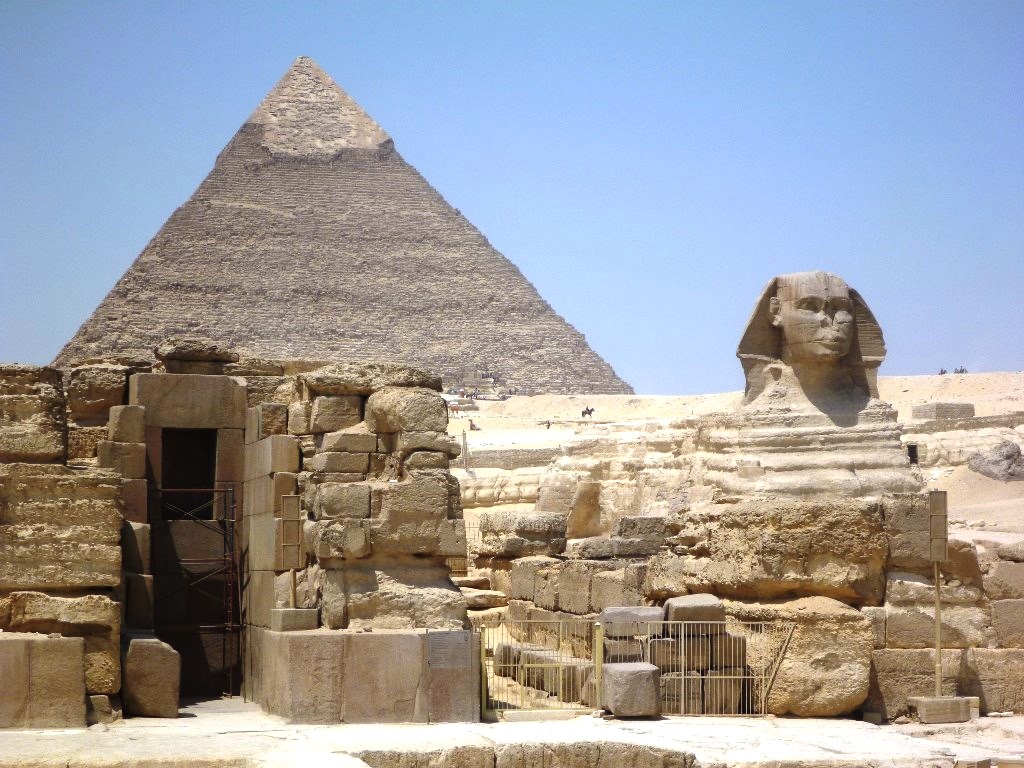

Our next stop was to the pyramids of Dashur (or Dahshur), which were furthest away and least frequented. The two main pyramids there are the “Red Pyramid” and the “Bent Pyramid“. These were both commissioned by Snofru, and there is a whole mystery with theories as to why he built the bent pyramid (steeper on the bottom and a more gentle angle at the top) and why he would have a second pyramid built within 1km of the first. We visited the Red one first and climbed all the way down inside it.
The burial chamber had a “corbelled” ceiling, which means each of the stones were overlapped with the ones below it until they met at the center top. We then drove out to the Bent pyramid. There were no other visitors besides us and we were greeted by two police guards with guns… Just to protect us, or the pyramid, or both. As we started to walk around the pyramid, they just came along with us, giving us bits of info and insisting on taking our picture at the highlight stops on their unofficial tour. They were funny and nice, just sort of dragging their guns around with them. They picked up a little rock on the pyramid and handed it to me as a souvenir. I had some little bit of anxiety about taking part of an Egyptian antiquity off the site, but when a man with a gun is giving it to you, just just say “thank you”. 🙂 Actually, I liked their little tour.
Our last stop was to Sakkara (or Saqqara), in between Giza and Dashur. We just couldn’t avoid the compulsory tour for baksheesh here and gave ourselves up to being walked around the site and let into a few rooms that were supposidly not open to the public for a little baksheesh. The “Stepped Pyramid” is in Sakkara, but unfortunately we couldn’t get too close as it is under significant restoration. We did manage another “unoffical tour” to view a statue contained within the pyramid and walk down to one of the tunnel entrances.
25 Apr – Cairo – Day 3
We had a lot to cover in one day. We started off at the Citadel, the old fort containing the Mohamed Ali Mosque, a beautiful structure with panoramic views of all Cairo. It was a bit hazy, but you could still see the pyramids of Giza in the background. We had a little tour of the mosque and the surrounds, including some great historical info, then walked around the grounds. There is another mosque in the Citadel called the “Green Mosque” because of its colored dome. The Mohamed Ali Mosque is still in use for prayer, but the Green Mosque is not.
There was a little stand set up inside the Green Mosque where they were offering free information about Islam. We started talking to a lovely young girl as Roger wanted an overview brochure to learn a bit about the religion. I asked them about what I consider the horrific tradition of FGM (female genital mutilation) that we in the west hear so much about. I wanted to know whether it was in the Islamic religious teaching or if it originated and was carried forward by tradition. They said it was not in the religious teachings and that it was not compulsory… I am not sure I was getting the whole story, as I can imagine that there would be pressure to continue this practice in the more conservative areas. FGM is currently illegal in Egypt, though from reading I understand that the practice is still wide spread.
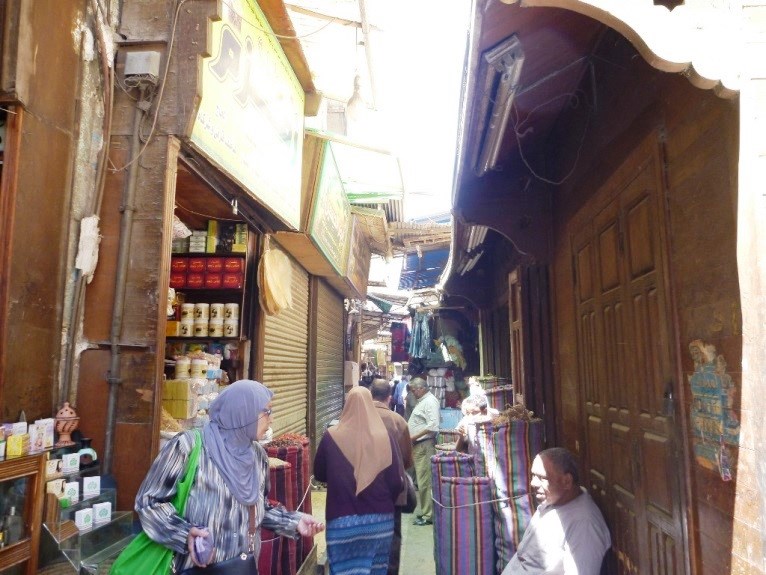
From the Citadel, we caught a cab to the old Islamic Cairo. This area of narrow winding streets and bazaars was very interesting. We could have easily spent an entire day there, but we only had an hour or so to explore. A gentleman walked us through the old parts (rather than staying on the more touristy street), through the spice bazaar, and into the perfume bazaar. Of course he eventually led us into his family’s shop and had to show us some of his essential oils. It’s part of the whole experience. In the end, we bought a small bottle of Frankincense and Murr, which smelled lovely.
Our guide showed us a nice place for our Egyptian lunch (which was excellent) and then we headed on to the Egyptian Museum. We could easily had stayed much longer at the museum, but it closes at 4PM so we decided to make the most of the time we had. We lucked out, as they close the doors to newcomers at 4, but once in one could continue browsing for quite a lot longer. We left at about 5PM. The amount and quality of the exhibits were awesome. We were glad to have been to Luxor and the Pyramids before coming to the museum as we were able to picture where the many statues and hieroglyphics were located. The absolute highlight of the museum was the King Tutankhamen tomb exhibit. They removed most of what was in the tomb and it is on display here. The amazing wealth of objects, from his coffins and mask, to jewelry, chariot, throne and more was fantastic to see in person. The mask of King Tut is probably the most well-known and spectacular antiquity of all times due to how magnificent it is and how well it (and the other objects) were preserved.
And so concluded our adventure in Cairo and visit to the great pyramids. We caught the bus back to Suez and made ready for our trip through the Suez Canal and into the Med!

